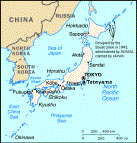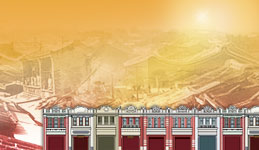|

|
 Street in Kobe
Street in Kobe
Kobe
(the red spot)
is a major city in Kinki area of Japan.
Motomachi street, located in Kobe is a well-know street in Japan. This
commercial street offered consumers a more comfortable shopping
environment by covering
transparent roofs. Although there are
significant differences between the old “no sky” streets and modern “no
sky” streets, the concept of serving consumers and making shopping more
convenient always leads to great success in business.
|
|
 |
 |
|
Japan |
Around
Kobe |
|
|
 History
of Motomachi Street History
of Motomachi Street
Motomachi commerical street in Kobe has existed since Edo
period. It has been constantly developed since the start of
Kobe Harbor,
1868. It has the reputation as the oldest
street of Kobe, of Japan. The street is decorated with large
amount of lamps and colored glasses. They characterize the
history and culture of Yuanding Commerical Street in Kobe.
It is Edo Harbor in the south to the commercial street;
Zoucyu mountain in the north; Foreigner’s residency in the
east. There are also many other commercial streets around
Yuanding, such as Sangong Commercial Street, and Nanjing
Street with Chinese style, which is famous for Chinese food.
 TOP
TOP |
|
 |
|
Motomachi
commerical street |
|
|
 The
Street Today
The
Street Today
Located between Lichuanjin to the Motomachi stop of Kobe
high-speed railway, Motomachi commerical street is
2
kilometers long. Within the range, there are shops of
various types, from department stores, clothing shops,
restaurants, bookstores, tableware, and whatever you can
think of. The commercial street is like a community. Shop
owners help each other or hold activities by their
organization. Motomachi commerical street usually holds
concerts on some specific spots, for example, Fongyuetan
Hall. The organization of the commercial streets is very
tight. This is similar to the Hanjiao of the “no sky” market
area in Lukang. This character is shown by the fact that
most shops have one day off on Wednesdays.
 TOP
TOP |
|
 |
|
Map of the street |
|
|
The
two-floor high commercial street with transparent roof enables
pedestrians to continue their shopping in rainy days. The long street
was divided into several divisions, providing different consumers
various choices. In addition, the old custom was located at “the spot of
harbor during Mingjhih Reformation” on the end of 6 Dingmu Road. |
|



